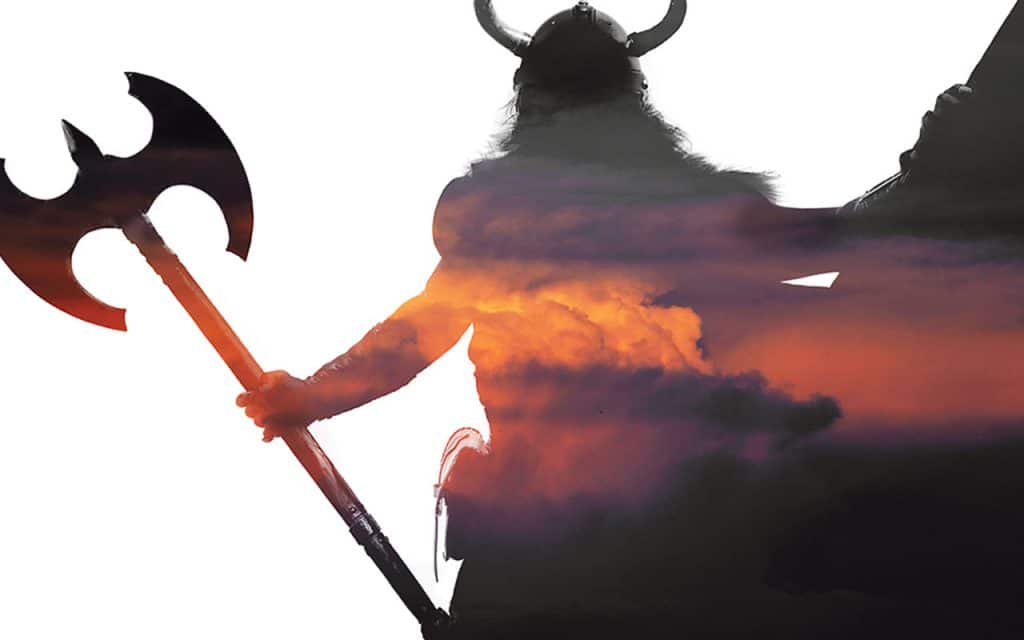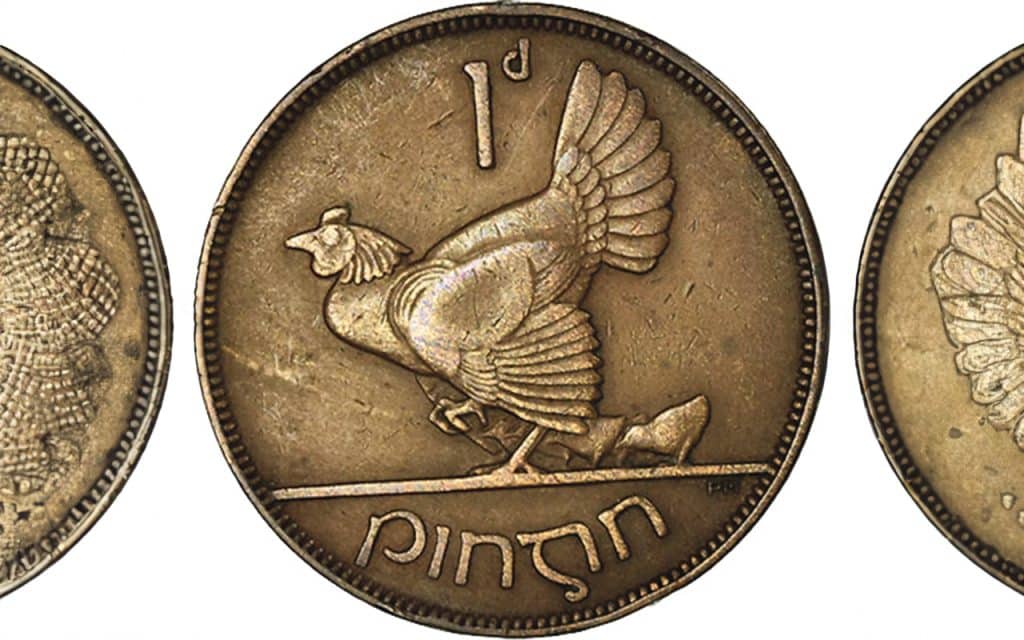
It’s very difficult to change a perception of anything once it becomes established in popular culture. It always seems to me that Irish people like that we have some link and heritage with the Vikings. They come from an era that was pre Anglo-Norman, who of course became the permanent conqueror that went on to dominate the Irish culture with devastating consequences. Perhaps for this reason alone, we look at them more sympathetically. For anyone who has seen or been on a ‘Viking Boat’ tour in Dublin, they are always full to the brim of happy domestic and foreign tourists, swords in hands, sporting a massive horned helmet on their heads. I think it’s fair to say that a similar themed tour based on the history of the English invaders would not be box office, to put it mildly. And of course they are credited with the founding of what would become some of our major cities, such as Cork, Waterford and Dublin. Although the English invader created most of our towns and villages, they don’t attract the same ’credit’. The Irish version of my own name, O’Dubhghaill, means the ‘dark foreigner’, i.e the Viking invaders. That term is used in the ‘Annals of the Four Masters’. Interestingly, these annals are first written in the early 17th century, and this leads me to the question, why were they referred to as ‘Dark Foreigners’ in the annals, 500 years after they were defeated/integrated or had moved on? Why not call them Vikings?
This intriguing question was answered by one of the guides in Roskilde Viking Museum, a 30km trip outside of Copenhagen. He said the common reference to Vikings at the time, might be more accurately called a ‘gang of delinquents’, whose market value was not as tradesmen or farmers, but as marauders for hire. Neil Price, one of the most prominent Viking historians, writes that the ‘Viking’ term to collectively describe these seafarers, is from a later period, by way of cataloguing these Scandinavian people who of course hailed from Norway, Denmark and parts of Sweden. If you travelled back in a time machine to that era and asked for a Viking – no one would know who you were speaking about. They are recorded in ninth century in Lindisfarne, a monastery outpost in Northumbria, as ‘slaughter hounds’ – a more accurate perception of how our fun-loving friends display them on the Viking Dublin boat tours! Although it would be disingenuous not to acknowledge that in general Irish people do understand that the Viking did pillage and kill, as well as sack monasteries, do we really know how bad they were? And if so, would we be ‘celebrating’ our Viking connections?
Firstly, let’s look at our common perception of a Viking: Massive, bedraggled, wearing intimidating horned helmets to terrorise their opponents. Not all of that is fully true. We can’t look at contemporary written sources by them because the Vikings didn’t have a written culture. Therefore, we must look to archaeology, and history’s new companion, science. The horned helmets have never been found but one thing the Vikings did leave was thousands of graves and treasure troves, full of clues of their lifestyle. What is commonly found are combs, particularly beard combs. While Vikings may not have left written accounts about themselves, other peoples living in that era who were literate, did. There are stories of them being finely-groomed people, who tied their hair back, bathed once a week (that’s a lot in mediaeval times). Such observations were noted in Byzantium, where many sailed to, and would come to form the ‘Varangian Guards (a type of bodyguard) for the city’s rulers. DNA testing on bones has shown they were not giants or particularly massive but standing two inches on average higher than a regular person; collectively this possibly makes them more imposing. Science does show that the peoples from those regions had a high bone density, meaning they could put on a lot of muscle, probably attained from rowing their boats. Big – but not quite like the giants depicted on your television screens.
What is most impressive at the Roskilde Museum, are the remains of five Viking ships, that were found preserved in the shallow waters of that bay. The place itself was an early settlement and it appears that some of the boats were ‘scuttled’ as a means of creating a defensive barrier in narrow waters. They also put in wooden spikes in the bay, to prevent ships from entering. What’s most interesting is that none of the boats are alike. Most of us associate the Vikings with the long, slick, attack ships that were build for speed and narrow enough to navigate large rivers. When you look at one in the flesh, Napoleon’s famous concept props up, ‘if an army marches (in this case sails) on its stomach’, where did they put their supplies? The museum has a super example of a ‘cargo’ boat’. It’s wider and deeper and was used to bring supplies, livestock and, most importantly, only needed to be crewed by only four or five people. None of the ships had any means to shelter their crew. Anyone who has been on a ferry to the UK or Scandinavia, knows only too well how wild the sea can get. These were hard people.
From an Irish point of view, the most intriguing thing of all in this museum was that the long boat was built of Irish oak and constructed in Ireland, then sailed across. What it reveals is that the Viking shipbuilders had understood the suitability of Irish oak for shipbuilding and so created Irish ship yards, so to speak. The beams of oak, science can reveal, have their origins from trees in Glendalough. I was amazed by this, but it all made sense. The chances are that most of you would have seen or even visited Glendalough, and its monastic building – the round tower. This was built around 900, after a Viking raid. The monks might have been the target, but it seems the big (unintended) prize was the woodland.
The Vikings were good at recycling too. They would often use wood from other boats to patch up and replace damaged timbers. This is clear on one of the boats because a ‘dragon’ head is still visible on the panel, but it was taken from another boat. Parallel to Egyptian hieroglyphics that today look colourless but were once a plethora of colours, it also has been proven that Viking ships were also painted with colours; predominantly, yellow or red resins. Like the hieroglyphics in Egyptian tombs, the boats’ colours have faded or worn with time, so what we see today is that ubiquitous standard bog colour. Inside the boats, there are what look like hollows, where the mast would fit to hoist your sail. This may be an obvious construct for sailing, but many Scandinavian historians had debated if they ever used sails, given that for all their boat burials, not a single sail has ever been found! Our guide pointed to other archaeological evidence, such as coins, that depicted Viking boats with sails; and other cultures that also depicted the Viking boats with sails, in art and manuscripts, as proof they did exist. Perhaps, as good recyclers, they saw the value in not burning or burying their sails. In addition, Viking tombs were often raided, in their own times, to recoup some of the treasures and weapons too. It seems unlikely that they would have travelled as far as they did by manpower alone. As well as invading Ireland and the British isles, they navigated into central Europe, Russia and to Byzantium [Istanbul]; they discovered Iceland and settled it, and there is archaeological evidence of their settlements in Greenland, the Faroe Islands, and they are now conclusively credited with being the first Europeans to settle in North America at L’Anse aux Meadows in Newfoundland. (Sorry St. Brendan!)
The Icelandic Vikings who, by the 11th century, were composing the great sagas of their Viking ancestry, give us a peak at what they were once like and archaeological evidence adds another layer too. Perhaps a lesser-known fact and less palatable aspect in contrast to the brave explorer-adventurer perception, is that Vikings were slavers. Nearly all domestic families possessed them. The sagas speak of it, and so do finds like neck locks and contemporary artist slates carved with scenes of people being led away by Viking raiders. But perhaps the most accurate sources are again, from other cultures with the written word, who would later record what they saw. One such eyewitness north African Arab trader, Ahmad Ibn Fadlan, who met slave traders on the Volga in 922, recorded how the Vikings would rape their female slaves before selling them, often multiple times. In Norse they called them ‘thralls’ (from which we get the word – enthralled – as to be captivated by something). There were many laws relating to thralls in Viking Scandinavia, none of which were beneficial to the slave. Because they were property, they could be and were killed without penalty to the murderer. Many were used as human sacrifices. How do we know? Amazingly science can look at their diet and compare them to better-fed ‘Vikings’ but we also have ‘runic’ inscriptions such as one on the Orkney Island that tells these tales.
Like any society in the world, a nation is not made of some pure bloodline. Dig deep enough and we all have some or part Celt, Viking, Norman, English, new age immigrant – that’s how societies have evolved and thrived – by meeting and mixing. It bemuses me even today that certain sections of Irish society want to wrap a veil around Ireland, as if some imaginary ‘pure’ Irishness will be contaminated, by foreigners. Having a Viking heritage is a key component of our make up as an Irish nation, but there are many uncomfortable truths about our ancestors. Perhaps historians of the future may equally find some uncomfortable truths about the current Irish society.



